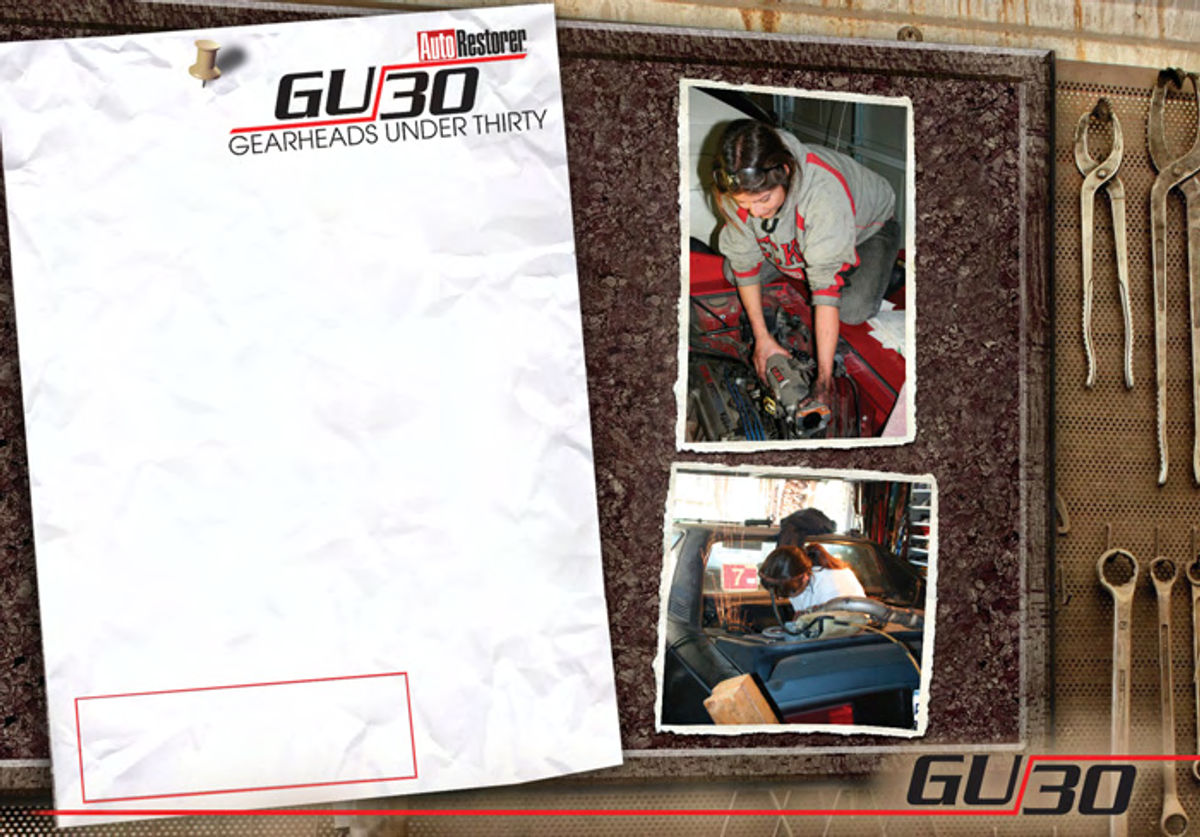How -to The Media In Media Blasting
You’ll Get a Range of Results Based On the Media Used. This Will Help You Work Better With Each Type.
BLASTING AWAY OLD paint is a big part of any restoration project, and the media used to blast that old paint can be as varied as the colors on the project’s old parts. But no matter which media you opt to use when cleaning vintage parts, your real concern will be the parts’ condition once all of that old paint is gone.
That’s because some blasting media will provide you with a surface smooth enough to paint right over while others will leave you in need of a lot of priming and sanding. Obviously, understanding which media is best for a given situation is the key to achieving the desired surface. So, listed below are a few of the more common blasting media out there along with some insight as to what these media will do to whatever you are blasting.
Silica Sand
The use of silica sand is about as old school as it gets when it comes to media blasting. Although it is rarely used these days to clean sheet metal panels because of its tendency to warp those panels, it is still being used by some restorers to clean frames and cast iron suspension parts. The problem with using silica sand is that it quickly turns to dust and breathing that dust is extremely bad for your health, so much so that the EPA has tightly regulated its use in commercial applications while some other countries have banned its use altogether.

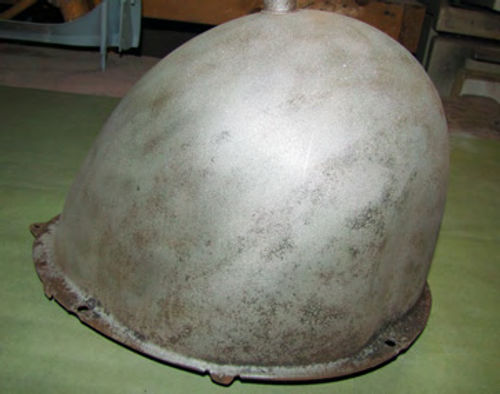
The reason silica sand hasn’t completely disappeared from use is that it is extremely aggressive and will make short work of any cleaning job. How aggressive? Silica sand will literally remove metal along with the old paint. That might not be a big deal when blasting cast iron pieces that have a rough finish to start with, but it can make parts that need a smoother finish more difficult to paint due to the pitting the sand will cause (Photo 1).
Because of its aggressive nature, there isn’t much that silica sand won’t remove. It will cut through heavy grease, paint and rust with ease.
However, silica sand tends to create heat as it works and that heat can cause sheet metal panels to warp, which, as I mentioned above, is why it’s not recommended for use on sheet metal. Another drawback to silica sand is that it also is hard on the blasting equipment. It will eat through ceramic blasting nozzles fairly quickly.
If you are considering the use of silica sand I would recommend confining that use to a blast cabinet and wearing a paint grade respirator any time that cabinet is in use. If you want to use silica sand outside of a blasting cabinet wear full body protection along with the paint grade respirator.
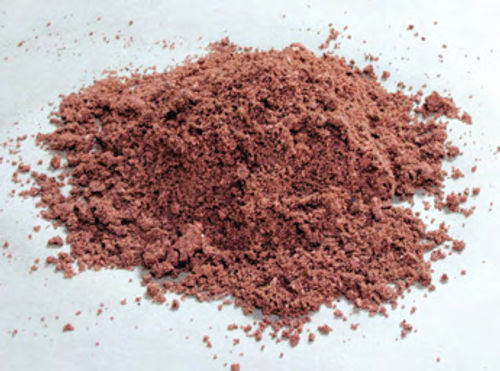
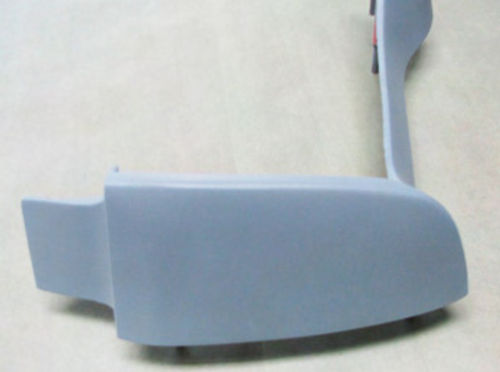
Coal Slag
These days when you go to your local blast media supplier and ask for silica sand most likely you will instead receive a product made from coal slag (Photo 2). Available under a variety of brand names and grit sizes, coal slag has become the preferred alternative to silica sand. I would hesitate to say coal slag is safer than silica sand because like sand it eventually turns into dust and coal dust is just as harmful to your health as breathing silica sand dust.
For that reason the same user precautions that apply to using silica sand also apply when using coal slag. Wear a paint grade respirator even if using a blast cabinet and add body protection if working outside of a blast cabinet.
Coal slag is almost as aggressive as silica sand when it comes to removing paint and rust, but unlike silica sand it doesn’t eat into the metal itself. It will, however, pit softer metals such as pewter, aluminum and brass but it will leave a much smoother surface on steel or cast iron than will silica sand.
Coal slag can also create heat and that heat can cause sheet metal panels to warp. However, coal slag isn’t quite as hard on the equipment so ceramic nozzles tend to last longer.
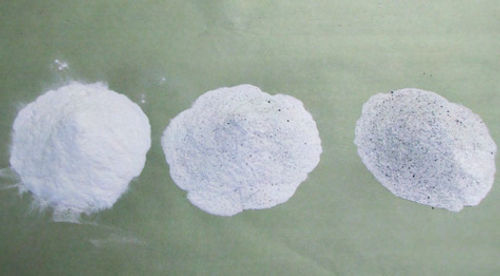
Aluminum Oxide
Aluminum oxide also is rated as aggressive, but it’s not nearly as aggressive as silica sand or coal slag. It will remove paint and light rust from steel and cast iron but at a slower pace and will leave the cleaned parts with a much smoother finish (Photo 3). As you can see in the photo it doesn’t work quite as well on heavy rust.
Out in the commercial blasting world aluminum oxide has become the media of choice as it will last longer than coal slag or silica sand before turning into dust. If you opt for a higher mesh number (I’ll explain mesh numbers later), somewhere around 90, you can achieve a matte finish that can be cleaned, sealed, and painted without additional priming and sanding. If you have a number of pot metal (pewter) pieces such as quarter extensions and headlight housings in need of paint removal, aluminum oxide would be a good choice.
Aluminum oxide will create some heat, but doesn’t tend to warp sheet metal panels the way silica sand and coal slag can. Blasting nozzles tend to last longer than with silica sand and coal slag and, of course, the same user precautions as mentioned previously apply when using this product. Wear a paint grade respirator even if using a blast cabinet and add body protection if working outside of a blast cabinet.
Walnut Shells

Walnut shell blasting media is just what the name implies, crushed or ground walnut shells (Photo 4). Walnut shells would be classified as environmentally friendly as they are biodegradable and far less hazardous to your health than the other items we’ve discussed. But don’t sprinkle used walnut shells on the garden as the mix will also contain old paint and anything else that might have been on the parts being cleaned.
Walnut shells will remove paint—use a mesh grit of 20—but not with the ferocity of most other blasting media.
They don’t do a good job of removing rust, but because they don’t harm the metal beneath the old paint they work great for cleaning pewter, brass and aluminum surfaces.
If you are into restoring pedal cars, tricycles or Radio Flyer wagons, walnut shell probably is the best blasting media out there for cleaning hard rubber tires.
Any surface being cleaned will be left with a dull, pit-free finish that is basically ready for a coat of sealer and paint.
My preference would be to use walnut shells in the blast cabinet and confine that use to small parts that would otherwise be difficult to sand and prepare for paint. Wear a paint grade respirator even if you’re using a blast cabinet and add body protection if working outside of a blast cabinet.
Glass Bead
This blasting material consists of preformed beads made from silica-free glass. Spill this stuff on the floor and you will be slipping and sliding all over the shop.
Glass bead blasting media is available in a number of mesh sizes but the one that I think works best for automotive applications is 70/100. This particular mesh is perfect for thin-walled steel, aluminum and brass and will leave those surfaces with a satin finish that is ready for sealer and paint (Photo 5).
Because spilled glass bead can be like walking on marbles, this media works best when confined to a blasting cabinet. Wear a paint grade respirator when working with this media.
Soda
Soda has come a long way since I first reported on the soda blasting process in the July 2005 issue. Back then soda blasting media was basically the same bicarbonate soda found on the baking goods aisle of the grocery store. These days you can purchase soda that has been formulated with additives to deal with removing paint (Eastwood #11806), to heavy layers of paint and light rust (Eastwood #11807), to heavy layers of paint and heavy rust (Eastwood #50494). See Photo 6.
The great things about using soda is that it is environmentally friendly, can be safely used on sheet metal panels, leaves the surface being cleaned pit free, and can be used on fiberglass vehicles without damaging the fiberglass.
If there is a drawback to using soda it has to be the necessity of cleaning away the soda residue before painting. If you do not remove this residue any painting product applied over it may not stick. The good news is that HoldTight 102 is a terrific product that can be used after all types of media blasting. HoldTight 102 is a surfactant (reduces surface tension) and when used correctly it will leave a clean surface with no residue to interfere with coating adhesion. HoldTight 102 is somewhat like soap, but unlike soap it will not leave a residue when dry (holdtight.com).
Some Things to Keep In Mind
Think safety first. I’ve already mentioned the need to wear a paint grade respirator whenever you are using a blasting cabinet and adding to that some personal protection when working out in the driveway. Even if the blasting media you are using is environmentally friendly you don’t want to breathe the stuff. It can cause health problems.
The extra protection when working outside of a blast cabinet would include a pair of heavy leather gloves, welder’s gloves will do the trick, heavy clothing to protect your arms, and a good quality blasting hood (Eastwood #22095). Most blasting equipment operates at or above 90 psi. That’s a lot of air pressure throwing sharp shards of blasting grit at you.
Next you need to consider which grade of blasting media is going to work best for your application. This is where the mesh number of the product comes in. The mesh, or screen size, of the media refers to a specific number of holes in a one-inch-square screen. The more holes, the smaller those holes must be, thus the higher mesh number. A good example is regular ground coffee compared to sugar. Coffee has a mesh number of 40 while sugar has a mesh number of 80.
What that means is that the lower the number on the bag the more coarse the grit. The coarser the grit the more aggressive that grit will be. More aggressive equates to faster removal and a rougher finish when you are done. Less aggressive equates to slower removal and a finer finish.
Something to keep in the back of your mind is that the more you use a specific batch of media, the finer it will become. A media that has become too fine to cut heavy paint may be perfect for cleaning softer metals or single layers of paint. The point here is that blasting media can be reused several times. All you need is a few good storage bins to hold all of that used media.
Then there is the issue of metal thickness. Did you know that most hoods and deck lids are made of thinner metal than are doors, fenders and quarter panels? That might be good to know if you are caught up in the blasting moment and want to move from a fender to the hood. A good blasting nozzle distance from a fender might be eight inches, but eight inches from a huge, flat hood might warp it. A little more nozzle distance might save that hood from the scrap pile.
Finally, you have to think about the tendency to touch bare, blasted metal with your bare fingers. Please overcome that urge. The oil from your fingers, hands, feet or any other body part you might want to press against bare blasted metal is going to be invisible and it is going to prevent most refinishing products from sticking to that particular spot.
But you’ve already touched the bare blasted metal? Put on a pair of latex gloves and bring out the degreaser (PPG DX320) and do some cleaning. Regardless of whether you touched the metal or not, degreasing is a step I think you should take before applying any type of finish. It is just good insurance against contamination.
About Those Engines…
Engine components are in a world of their own when it comes to paint removal. That’s because the last thing you want to do is risk trapping blasting media in the oil ports or water jackets of an engine. Murphy’s Law dictates that trapped blasting media only comes loose once the engine is completely assembled and running. That’s not a good time to circulate foreign material through your engine. So, engine components should be turned over to your local automotive machine shop so that they can be dipped into a vat of cleaning solution. This solution is usually powerful enough to remove everything but the metal itself.
A Nice Blasting Unit
The Eastwood Master Blaster #11737 (Photo 7; $400), actually is two blasters in one. I can load one side with soda to take care of the layers of paint and the other with something more aggressive to deal with the rust.
The 10-foot-long hose gives me plenty of room to work and the dual valve nozzle allows me to blast away with soda until I hit heavy rust then turn off the soda valve and turn on the abrasive media valve and keep blasting. If the paint gets thick I can regulate both valves to achieve a mix of soda and abrasive media to speed up the process.
Each tank holds about a hundred pounds of media and requires at least 90 psi at the inlet.
Got a question? Send it along.
Products Supplied By:
The Eastwood Company
263 Shoemaker Road
Pottstown, PA 19464
Automotive tools and supplies
LPL Body Works, LLC
5815Contented Lane
Amarillo, TX 79109
Producers of automotive paint
and body repair DVDs
